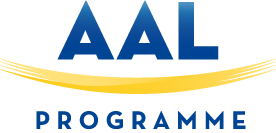SmartBEAT
Home » Success Stories » SmartBEAT
01. Introduction
The SmartBEAT project aimed to support senior heart failure patients, their families, cardiologists, and healthcare professionals through innovative ICT solutions. The project aimed to enhance self-care and monitoring through a digital platform that provides real-time feedback and improves the quality of life for older adults managing heart failure.
02. Summary of the project aims and objectives
The primary goal of SmartBEAT is to develop a smart, digital solution that allows senior heart failure patients to manage their condition more effectively. The project targets patients, healthcare professionals and caregivers, offering tools for self-care, continuous monitoring and immediate feedback to healthcare providers. The objective is to enhance disease outcomes while supporting sustainable and accessible healthcare practices.
03.Product development and key features
Key Features
- Autonomous condition monitoring for heart failure patients
- Real-time feedback for patients and caregivers
- Integration with healthcare professionals for continuous monitoring
- User-friendly platform with tailored functionalities
- Data collection via third-party platforms, allowing for comprehensive health tracking
- Adaptable to different national healthcare infrastructures
Additional Information
- Certification as a medical device in the EU
- Proven integration with hospital systems, allowing for local adaptations
- Finetuned through data from user-testing during the AAL project
04. Partners
Number of Partners: 10
- Fraunhofer Portugal AICOS, R&D, Portugal (Coordinator)
- Centro Hospitalar São João, End-user, Portugal
- Verhaert New Products & Services NV, SME, Belgium
- Remedus, SME, Belgium
- Seniornett Norge, End-user, Norway
- LifeonKey, SME, Israel
- VigiSense S.A., SME, Switzerland
- KempenLIFE, End-user, The Netherlands
- Stichting Smart Homes, R&D, The Netherlands
- Faculdade de Medicina da Universidade do Porto, R&D, Portugal
05. Impact on ePoint on participating in the AAL project
Key Takeaways
- Improved user testing and product validation
- Insights into market-specific requirements across Europe
- Development of a sustainable business model
Impacts on partners
- International collaboration fostered mutual learning
- Strengthened reputation through EU-funded project association
- Validation of technological features and business models
06. Main learnings from developing a solution through an AAL project
Technological advancements
- Data collection improvements via third-party platforms
- Enhanced understanding of user acceptance and practical application
User Insights
- Patients required more guidance in device usage
- User resistance to wearable devices (e.g., bracelets) led to redesign
Organisational impact
- Strengthened capacity for developing healthcare solutions
- Increased visibility and credibility through AAL involvement
07. Impact on networking and collaboration
Networking Impact
- Built new relationships with healthcare and technology partners across Europe
- Gained insights from international practices and healthcare structures
Collaboration
- Involvement of hospitals and end-users facilitated product relevance
- Exposure to diverse healthcare systems informed market strategies
08. Perceived benefits of participating in AAL Support Actions
AAL2Business participation
- Improved business model development
- Gained skills in identifying user needs and market positioning
AAL Forum participation
- Exchange of knowledge on commercialisation strategies
- Strengthened business planning skills
09. How AAL supported development and market adoption
User involvement
- Comprehensive user-testing process to refine device features
- Insights from healthcare professionals on real-world applications
Complexity reduction
- Simplified technical setup for seamless integration
- Removal of less user-friendly components (e.g., continuous-wear bracelets)
Awareness and support
- EU funding helped build credibility
- AAL involvement showcased in marketing materials
10. Challenges encountered
Commercial and market barriers
- Differences in healthcare systems across Europe
- Differences in healthcare systems across Europe
Financial challenges
- Establishing a sustainable revenue model
How AAL Helped
- Business planning assistance through AAL2Business
- Access to expertise on commercialisation strategies
11. Actions needed to launch the product
Market development
- Establish strategic partnerships for wider adoption
- Secure national health insurance reimbursement
Product proof
- Collect and present pilot data to demonstrate the device’s effectiveness
Funding and support
- Continue collaborations with hospitals to generate clinical evidence
- Seek further financial backing for international expansion
12. Next steps
End-users
- Primarily senior heart failure patients and healthcare professionals
- Expansion to other disease management areas, including oncology and neurology
Expected impact on end-users
- Improved quality of life through better disease management
- Enhanced self-care and reduced hospital admissions
Target paying customers
- Hospitals (currently 5 in Belgium)
- Potential expansion to general practitioners and smaller clinics
Growth projections
- Applying for device reimbursement by national health insurance
- Expected increased turnover and market reach through validated effectiveness
